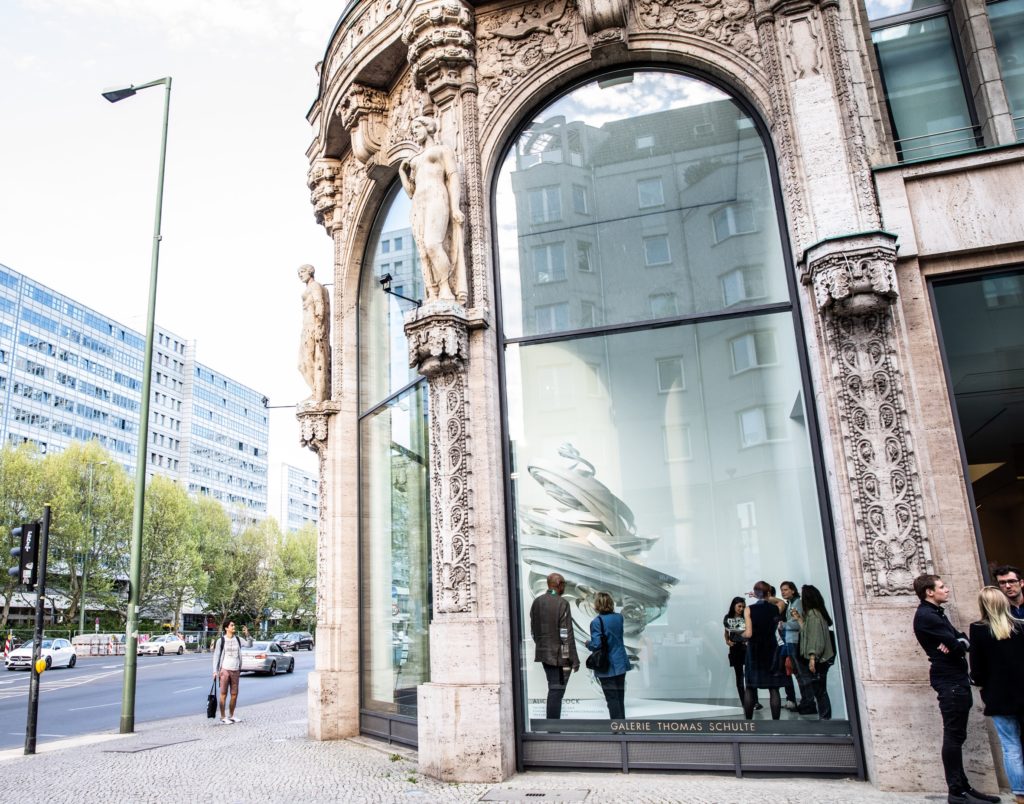Galleries
‘Bring Your Own Mask’: German Art Galleries Will Reopen in a New Reality Next Week, Giving Other Dealers a Preview of Things to Come
Attendance numbers will be strictly limited, and some dealers are requiring visitors to wear masks.

Attendance numbers will be strictly limited, and some dealers are requiring visitors to wear masks.

Galleries in Austria and Germany are cautiously preparing to reopen their doors in the coming weeks as governments ease business restrictions—providing art dealers in regions still under lockdown a glimpse of what may well be a new normal.
While a few smaller galleries in Austria began reopening last week, several German galleries have now announced that they will reopen as early as next Monday, April 20. In a statement, Berlin gallery Thomas Schulte announced that it was “pleased” to be reopening its exhibition of Robert Mapplethorpe’s X, Y, and Z Portfolios, which are being shown together for the first time in Berlin. The gallery reopens on Tuesday, April 21. “The rules of conduct practiced in recent weeks still apply, and a maximum of two visitors at a time will be admitted,” the gallery adds.
At a press conference this week, the German chancellor Angela Merkel said that non-essential businesses with spaces smaller than 800-square-meters (8,600 square feet) could reopen on Monday, April 20, while adhering to strict social distancing rules. Masks are not required but are strongly recommended. “We must not be careless now,” Merkel said. “We must remain focused—the situation is fragile.”
The easing of the rules will vary across the German states. In North Rhine-Westphalia, the state that encompasses gallery-rich cities of Cologne and Düsseldorf, showrooms that are more than 800-square-meters (8,600 square feet) may also be opened. In Bavaria, one of the hardest hit states by the novel coronavirus, business operations are only allowed to start up on April 27.
“I am more than thrilled to be opening again. Galleries cannot exist in an online-only world,” dealer André Schlechtriem tells Artnet News. “My gallery is a personal social space where every visitor is greeted personally by myself or my staff. We are always happy to answer questions and talk about the art we present. That’s what we live for.” The gallery will reopen next week, beginning with a weekly rotating presentation of shows that will be strictly offline titled “Berliner Luft,” meaning Berlin Air. The gallery is asking visitors to limit their time in the gallery to 15 minutes, wear a mask, and enter one at a time.
The cautious re-openings do not mean that the German art market is moving back into motion. Berlin Gallery Weekend and Art Cologne, the country’s two premier art market events, have both been postponed and the economic crisis is still looming. Due to the ongoing closure of borders, many planned exhibitions with international artists will likely still be on hold.
Suppliers across Germany are bracing for a 30 to 40 percent drop in sales for 2020, according to a report in Handelsblatt. Berlin gallery Klemm’s tells the news outlet that it expects a 30 percent dip in turnover this year. And while financial support from the German government through its hyper-efficient bailout plan has helped to mitigate the economic crisis for some galleries, it does not mean that the usual tides of collectors will be showing up any time soon.
More Austrian galleries have also announced that they will be reopening. “Please bring your own mask,” Bechter Kastowsky Galerie, based in Vienna and Schaan, requests in their announcement. “Confinement and home office can be tough. We have just spent a month travelling between table chairs, couch chairs and the bed,” the Vienna gallery Emmanuel Layr writes, also asking visitors to come with masks, a legal requirement in Austria.
Others are waiting to hear more news before they make the leap and open their doors. Dealers will also have to think carefully about how to deal with typically busy events like openings, screenings, and talks. Munich-based dealer Deborah Schamoni, who will remained closed until the end of April in keeping with the Bavarian state rules, says she is contemplating three-day-long openings to avoid the crush. Across Germany, large gatherings are still banned until August 31.
At the press conference on Tuesday, Merkel impressed the media with a highly coherent explanation of why physical distancing will remain essential to curbing the effects of the global health crisis. The former chemist explained that, currently, the reproduction number of the virus in Germany is 1 (meaning one person infects one other). If those numbers were to go up to 1.1, Merkel says the German health system could be overwhelmed by October. And if it were to go up to 1.2, hospitals could be overwhelmed by July.